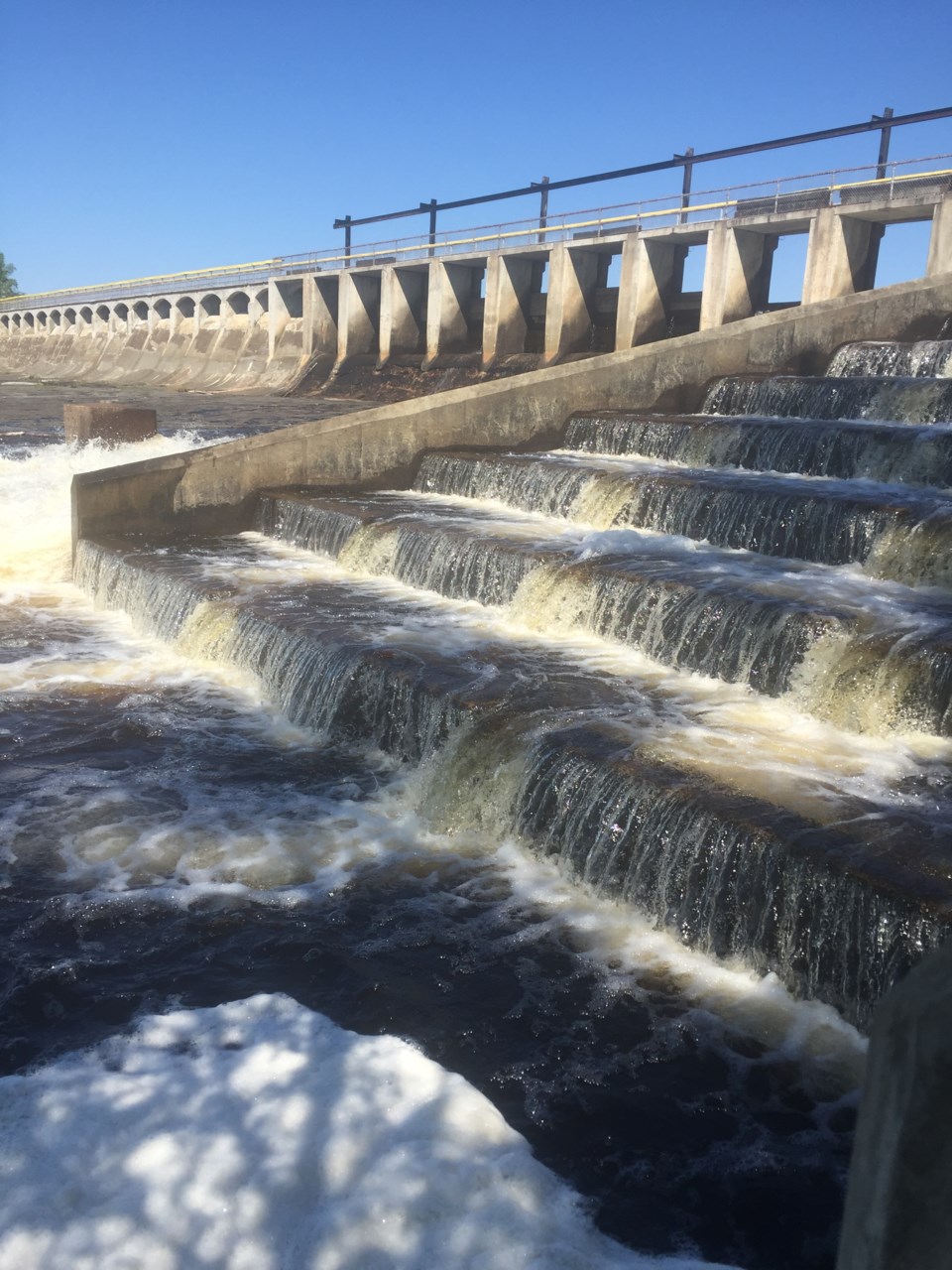THUNDER BAY — The North Shore Steelhead Association wants to know how many fish use the fishway attached to the Boulevard Lake Dam.
It's looking to install sensors that can count the number of rainbow trout (Steelhead) that are able to navigate the concrete steps in their swim upstream in the Current River.
Water temperature and water level data would also be recorded.
That kind of information has never been consistently documented since the fishway was built in 1991.
"After 30 years of operation, the questions remained about the functionality of the fishway," the Steelhead Association said in a statement Monday.
It's why it commissioned a federally-funded study in 2020 to review the fishway's design and report on optimal water flow requirements.
The report showed the existing structure is deficient in three areas – flow, hydraulic function, and attraction flows.
Last November, a followup report by consultants identified modifications that could be made to accommodate fish sensors, improve the internal flow hydraulics, and increase the attraction flows.
NSSA spokesperson Frank Edgson explained in an earlier interview that if there's not enough water coming over the last part of the ladder, near the river, it may not be enough to persuade fish to try to jump into the fishway.
"If it's a heavy, pounding flow, they're more likely to check it out" and proceed up the ladder to look for a spawning area, Edgson said.
Without a proper flow, fish may just turn around in the Current River and spawn downstream or leave the system completely and look for another river.
The association is now looking to the City of Thunder Bay, which owns the fishway, to support the modifications to improve its functioning.
Alterations would include creating small subsurface openings in the lowest point in the internal walls to allow fish to ascend more easily (excepting the cell that acts as a lamprey barrier).
Boards would also be added to the tops of certain walls to redirect and concentrate water flows.
The association is prepared to spend $40,000 to install two fish-counting devices and fencing.
It's already received $33,000 in funding from Environment and Climate Change Canada.
The project could be completed this spring.



